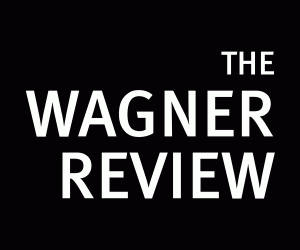If you haven’t noticed, Ebola has been in the news recently. The media hype surrounding cases in the U.S. has spun out of control, creating a online frenzy. Personally, I’ve overheard distressed New York City transit riders discussing arming themselves with Lysol to spray each seat and hand rail. It’s hard to identify the source of these fears given the miniscule risk of contracting Ebola.
It is understandable that the public should be concerned about a virus, particularly one new to the U.S., which has anywhere from a 25 to 90 percent mortality rate. However, the recent response by media outlets and politicians has dramatized the virus to an extent disproportionate to the threat of an Ebola outbreak in the U.S., spreading misinformation and distressncerning Ebola and its mechanisms of transmission. A mid-October poll by the Harvard School of Public Health showed that over one-third of individuals in the U.S. believe that they or someone in their family will contract the Ebola virus. In reality, Ebola is far less contagious than the common cold or the flu, although admittedly much more virulent.
The response by government and public health officials has been mixed, and has added confusion to the overblown media response. Governor Chris Christie of New Jersey and Governor Andrew Cuomo of New York have come under scrutiny due to the quarantine of nurse Kaci Hickox. Hickox was kept in isolation outside of Newark airport after returning from treating Ebola patients in West Africa. After one slightly elevated temperature she showed no symptoms of Ebola and subsequently tested negative. Health officials, however, forced Hickox to stay quarantined, for reasons motivated more by political pressure than epidemiological risk. Ensuing media coverage illustrated the drive of political concerns as an overreach that restricted individual rights based on an arbitrary happenstance. This incident revealed confusion over what the appropriate procedure should be in these situations, which are bound to reoccur as the Ebola epidemic continues in West Africa.
In response to the media coverage and public concern about the spread of Ebola, the CDC updated its response guidelines; New York State and the state Department of Health (DOH) also released statements detailing the specifics of their Ebola-preparedness plan. Key changes in the CDC guidelines include risk levels to classify people who have been exposed to Ebola. The four risk levels range from “High risk of exposure†(direct contact with body fluids of a person with Ebola) to “No risk of exposure†(having contact with a person sick with Ebola before they had symptoms). Since mid-October the guidelines also recommend actions based on the type of exposure to Ebola, including active monitoring with public health workers conducting visits and telephone calls. The CDC also created “CARE kits†(Check And Report Ebola) for people returning from West Africa, which give individuals information on how to check for and report Ebola symptoms. One of the most significant updates in the guidelines is that people with “some risk exposure†but no symptoms are subject to public health orders by their local health department. This potentially makes state restrictions far stricter than federal guidelines dictate, as experienced by Hickox. The CDC guidelines incorporate a range of scenarios giving health and public administrations the guidance that was sorely missing before.
In response to the new threat of Ebola, New York’s Governor Cuomo released an “Ebola Preparedness Plan†outline that incorporates the DOH, Port Authority, Metropolitan Transit Authority (MTA) and other state agencies, incorporating crucial agendas for public safety. He identifies eight hospitals in NY State designated to take Ebola patients as well as plans for training and readiness activities. The Port Authority along with the CDC coordinated advanced screenings at JFK airport and the MTA, in conjunction with the DOH, created a new Ebola virus protocol for riders and employees.
Understandably, forming an appropriate response to a contagious disease with a high morbidity rate has caught the attention of the media, and, in the U.S., is a challenge both politically and operationally. As we continue to face the epidemic in Africa, hopefully state and local administrations will continue to rehearse and revise response plans as necessary. The established Ebola Preparedness Plan for NY State and the new CDC guidelines cover a comprehensive series of scenarios for United States in regards to treating potential Ebola patients. The thorough, albeit slow, response by the CDC and NY State has strict guidelines for how to respond to future Ebola patients. With a procedure in place, we can speculate on how the state would perform in response to the arrival of one or more Ebola patients. Personally, I am confident that if and/or when new cases arrive in the US, NY and the CDC will be quick to action and able to adjust detection, monitoring, and treatment guidelines with additional experience.
Kathleen is a MPH & MSN-ANP Candidate at New York University’s Global Institute of Public Health and College of Nursing. She currently works as an ER Nurse in New York City.




